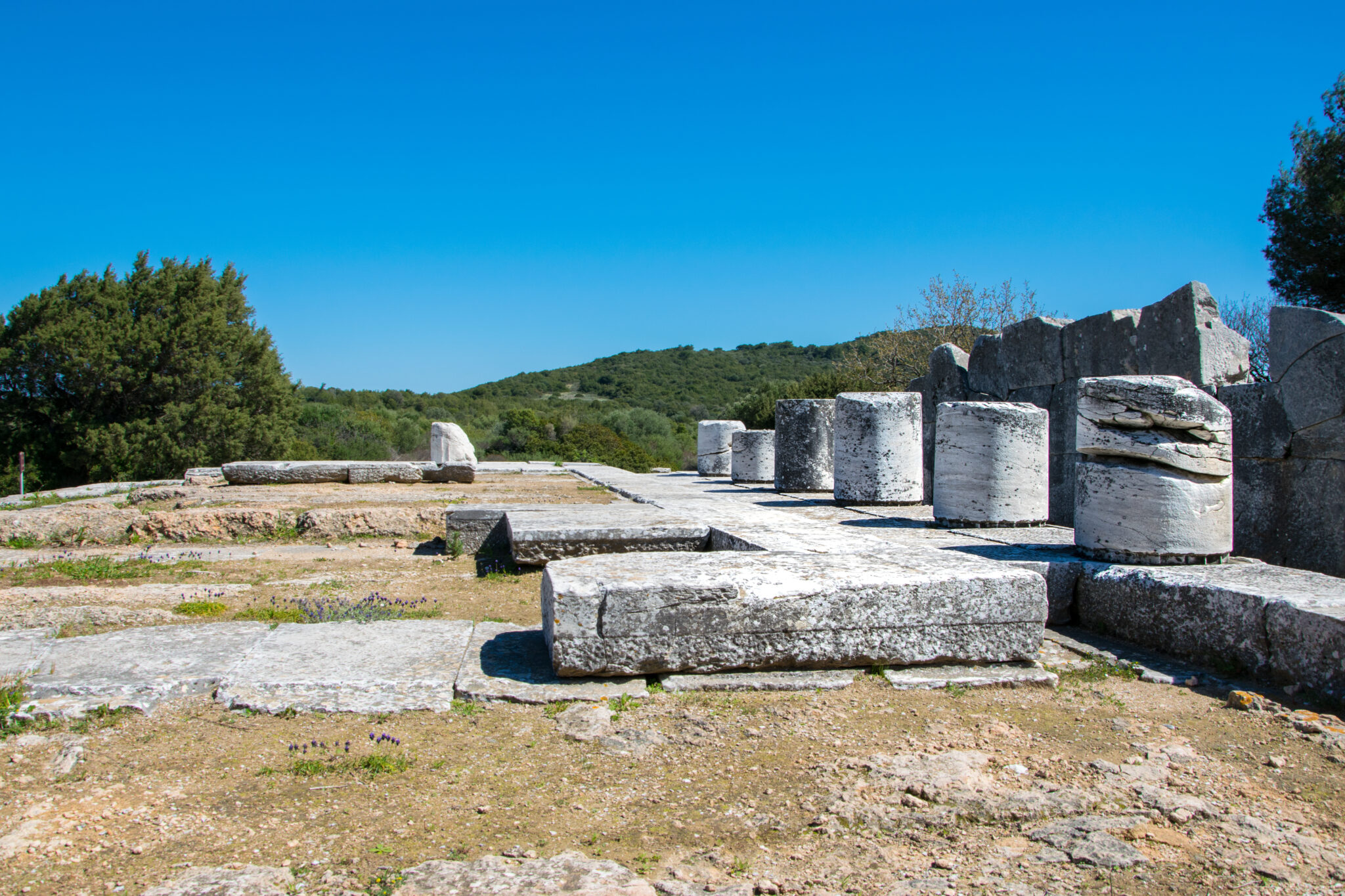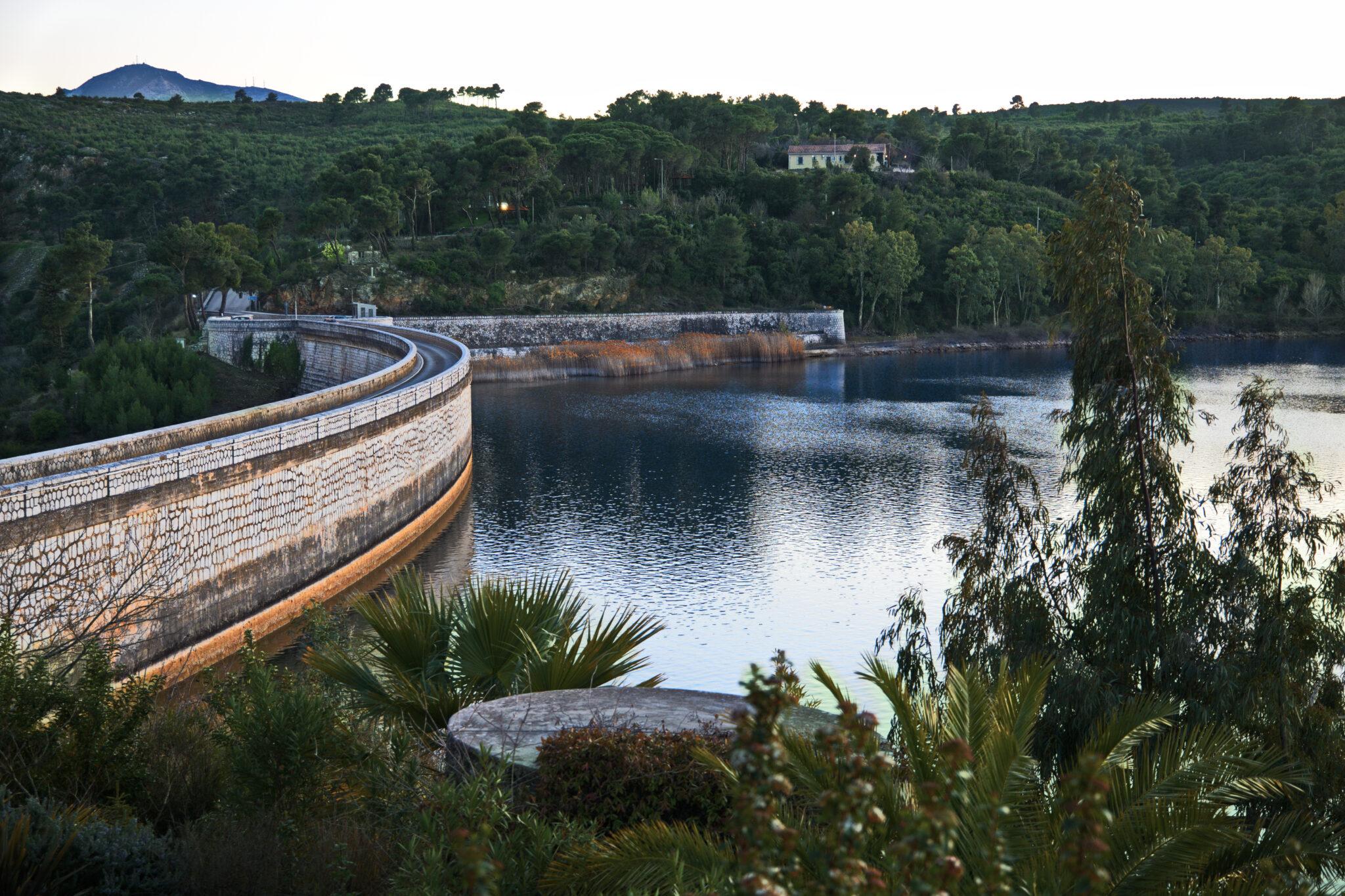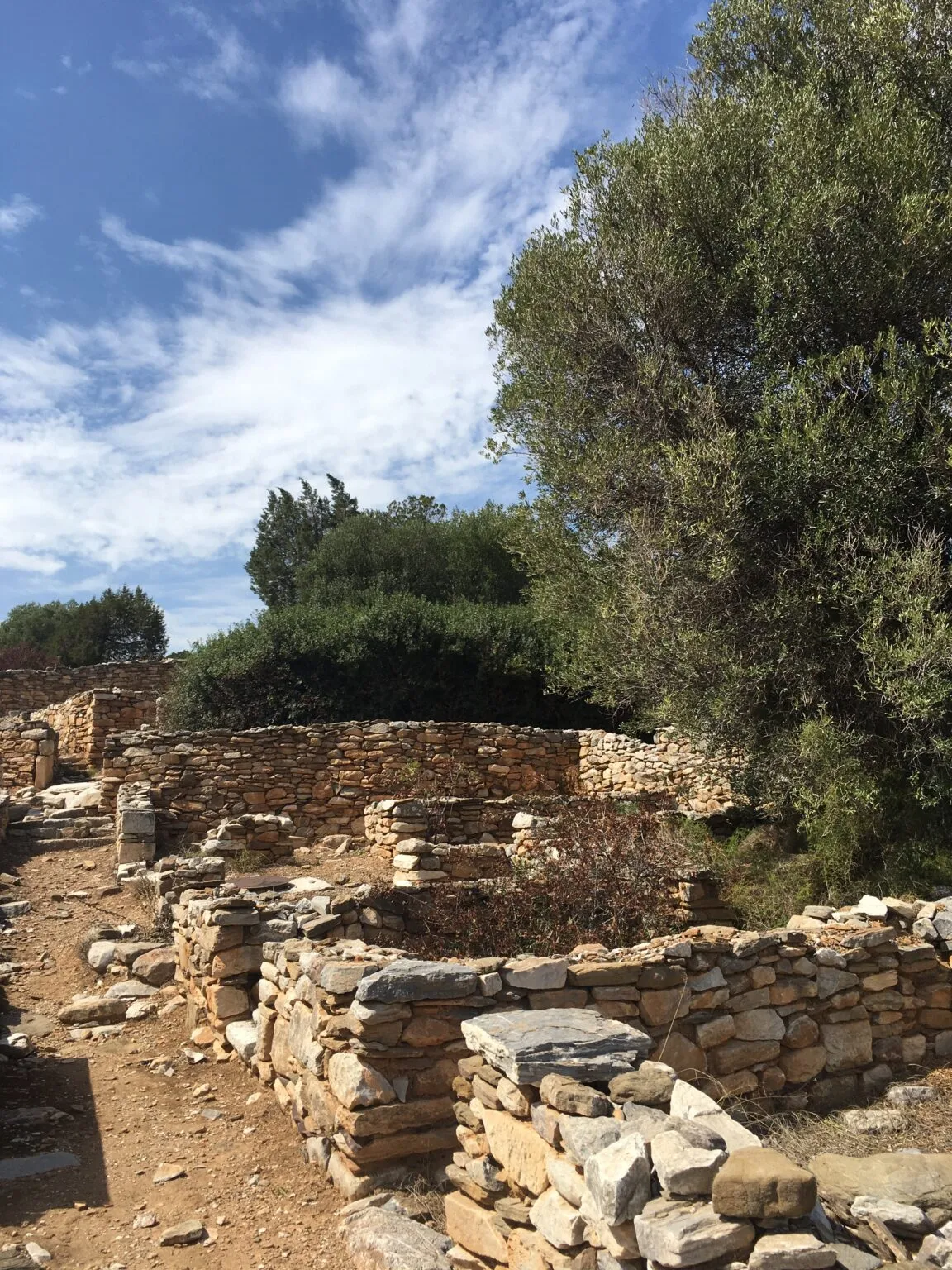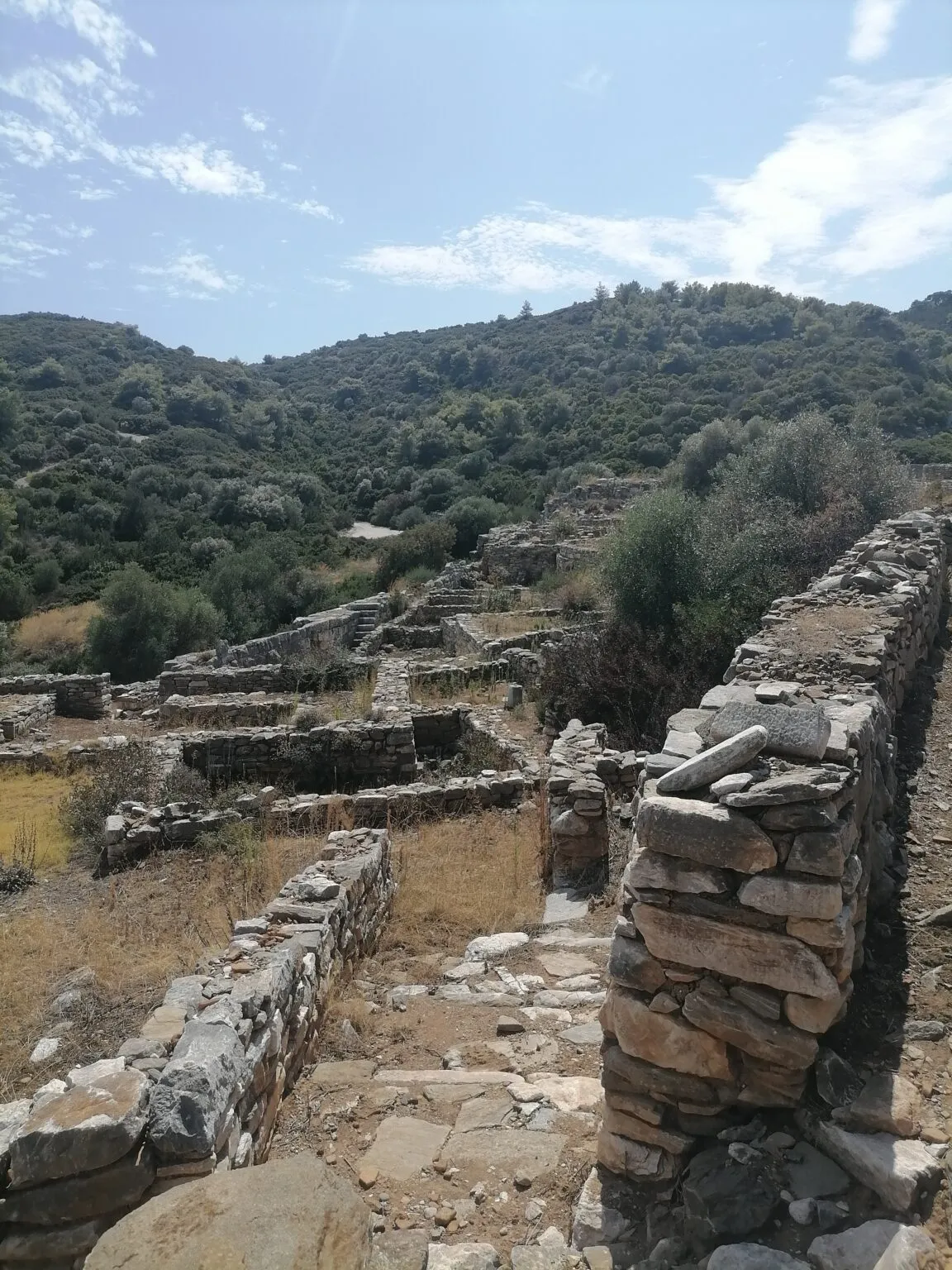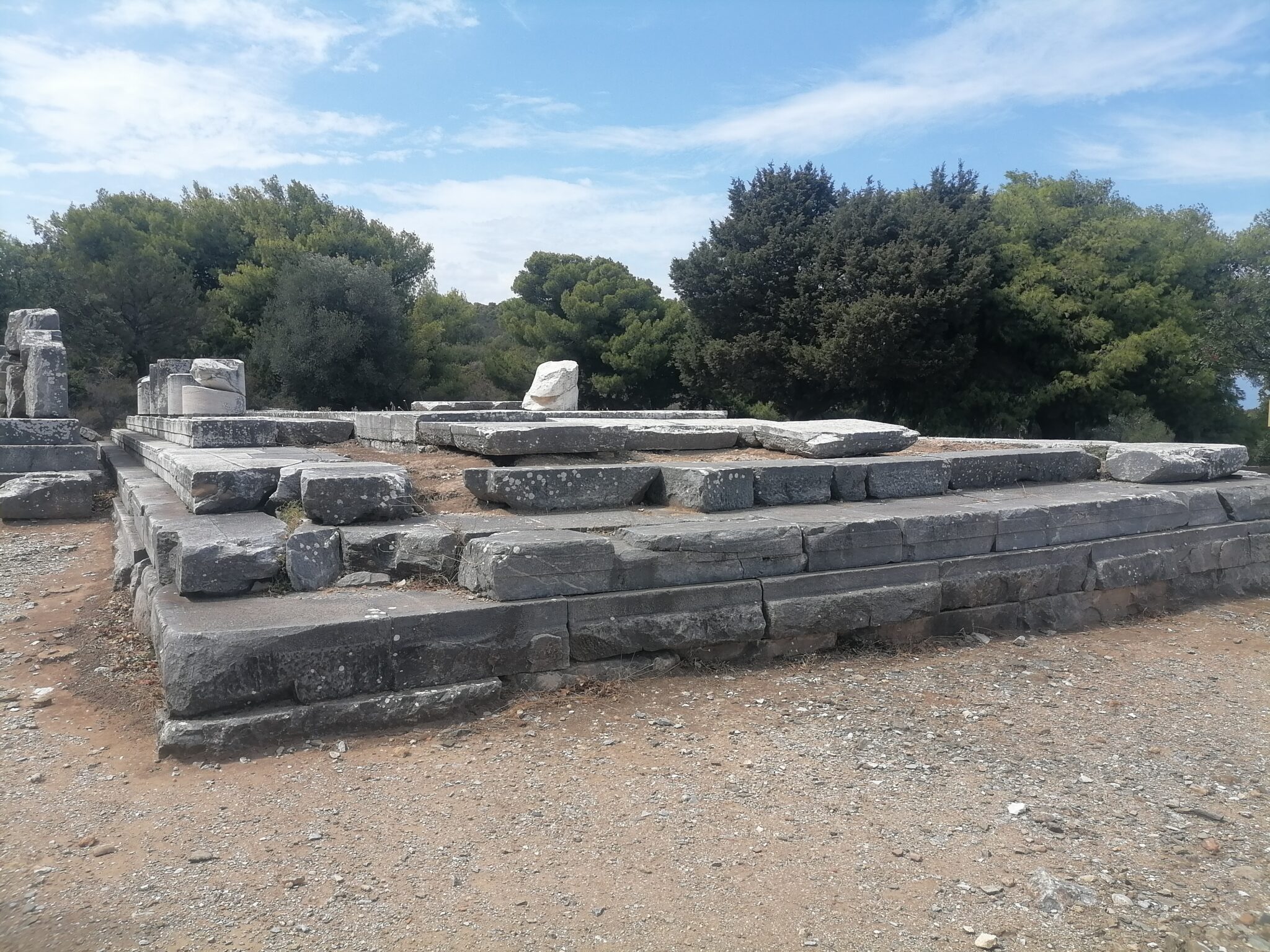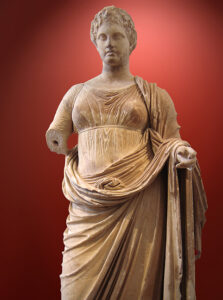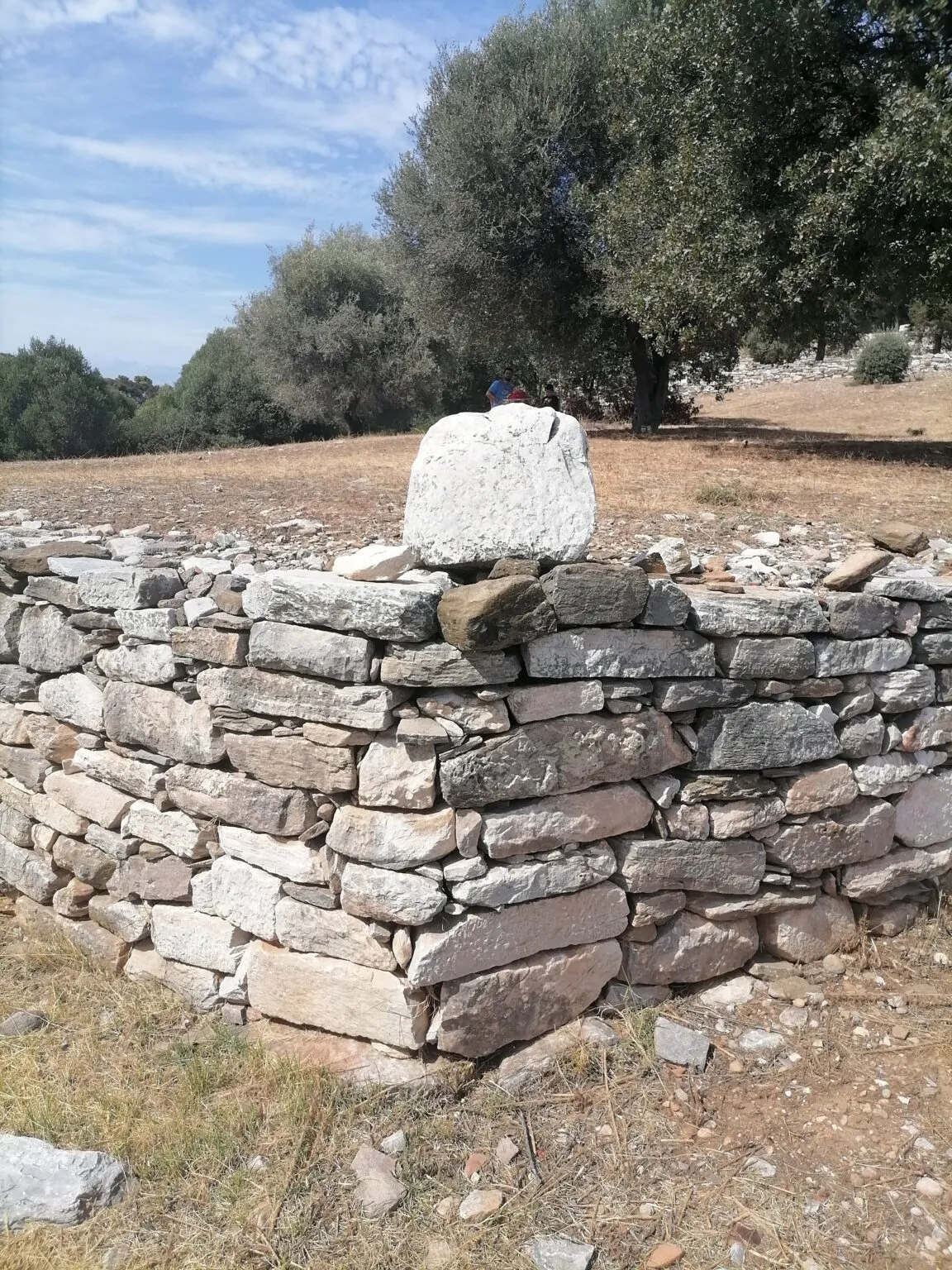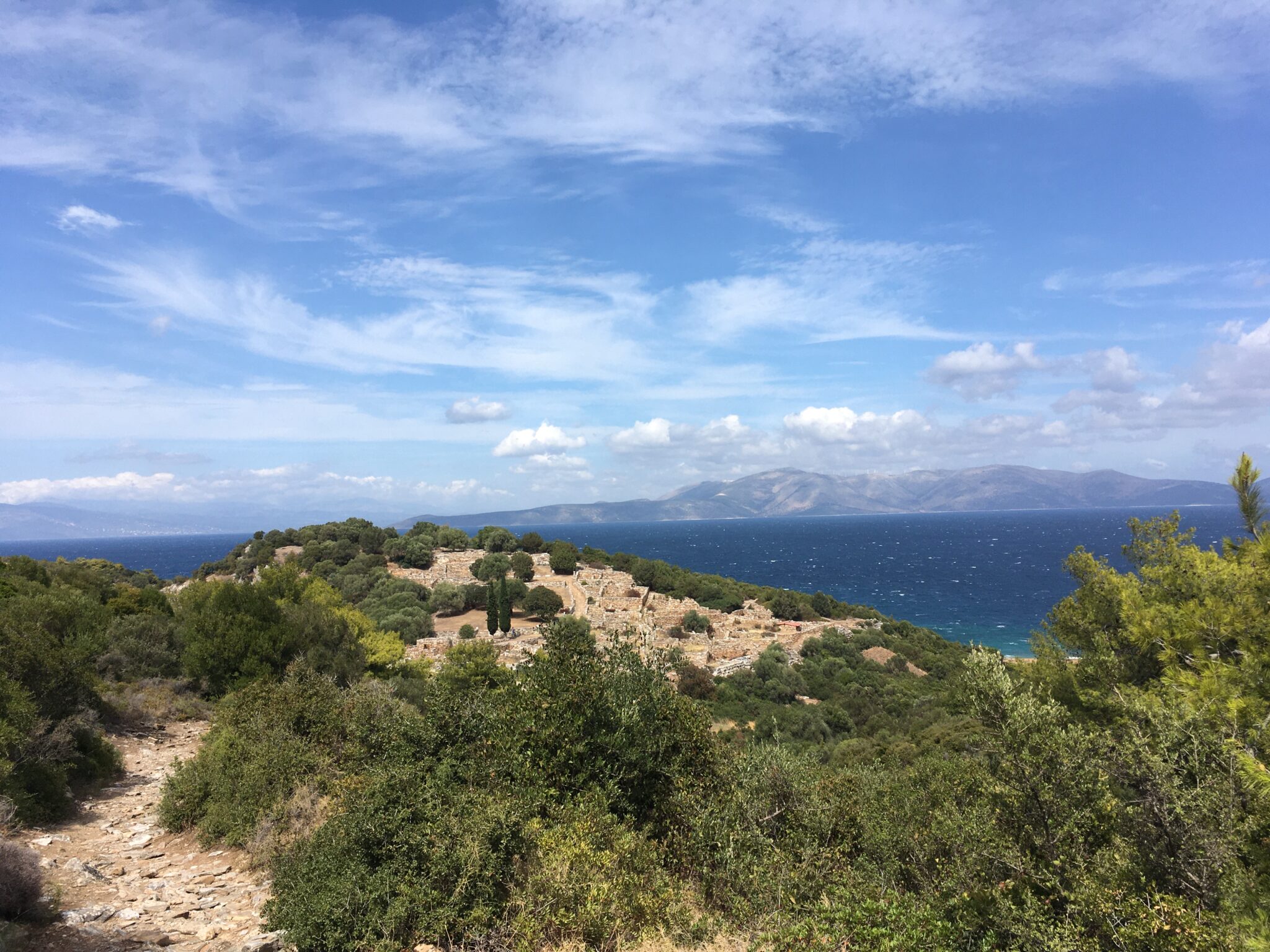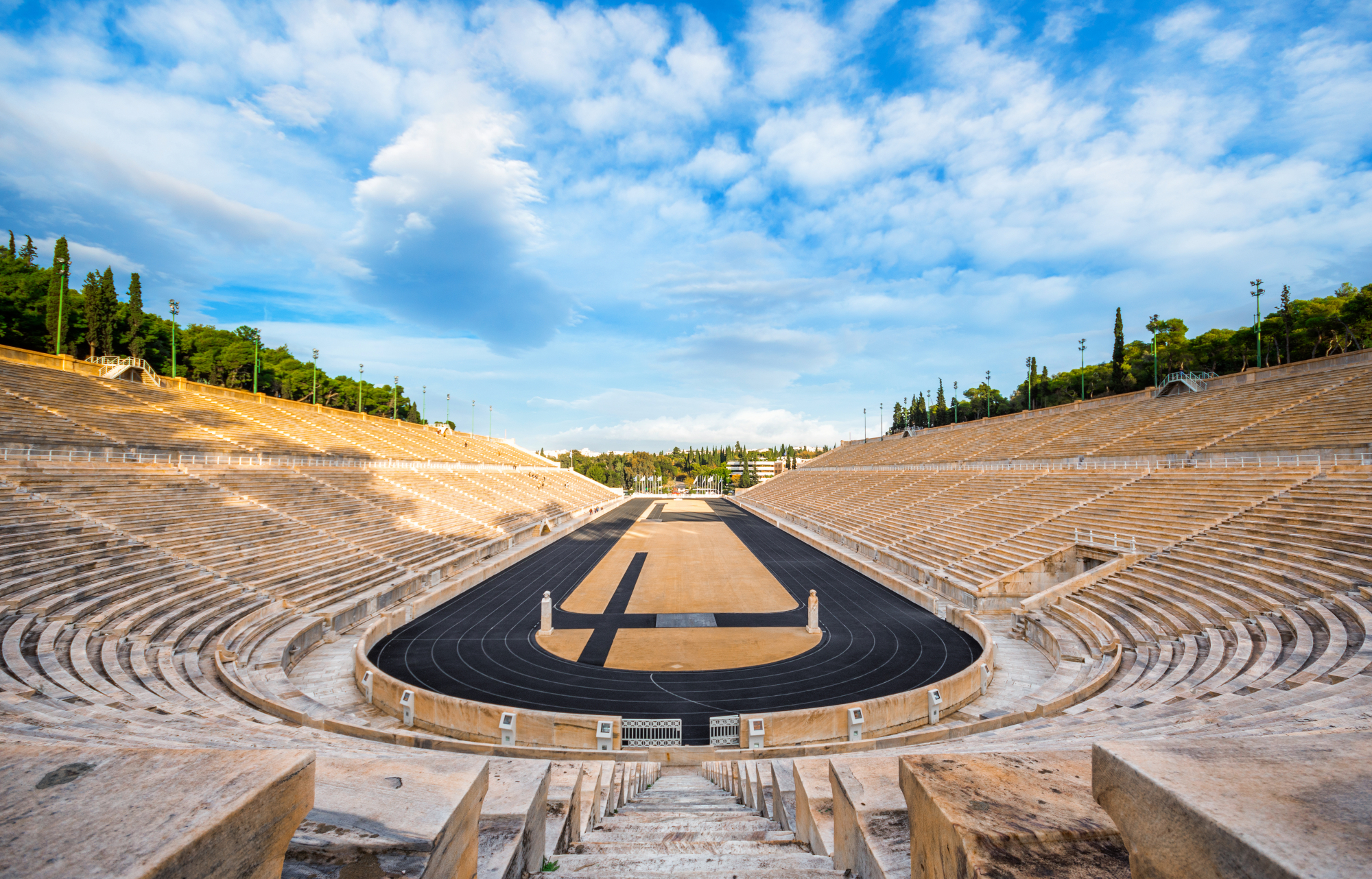Even in 2023, there are corners within Attica that remain relatively undiscovered. One such place is the archaeological site of Ramnous, situated approximately 60 kilometres northeast of central Athens, 7 kilometres from the Agia Marina port, around 20 minutes from the Sesi beach, and a brief 15-minute drive from the renowned Schoinias beach. These points are mentioned to illustrate how a trip to the archaeological site can be effortlessly combined with a coastal excursion and a swim for those keen on an autumnal dip.
We believe that this somewhat underrated archaeological gem deserves to be the highlight of an autumn day trip from Athens when we recently experienced it first-hand, were left with no regrets. En route to Ramnous, one can pause at the Marathon Lake dam. The serenity of the lake, once so crucial to Athens’ water supply, is enchanting. It’s easy to forget its proximity to the bustling heart of Athens. The sight of a deserted café by the dam’s side further reinforces the idea that this area remains somewhat of a mystery even to locals.
The dam itself, entirely lined with Pentelic marble, was an engineering marvel of its time. Inaugurated in 1929, it addressed Athens’ pressing water shortage.
Travelling Back in Time
Leaving the dam behind, and driving for about another 20 minutes, we find ourselves at the entrance of the archaeological site. The ancient settlement of Ramnous remains obscure to many, rarely making an appearance in mainstream tourist guides. Even on a Saturday, the number of visitors was minimal. Before embarking on our exploration, we took the time to acquaint ourselves with its rich history and mythology.
Here stands the Temple of Nemesis, the most significant sanctuary dedicated to this deity in Greece. Nemesis bears a resemblance to Artemis and could perhaps be a regional interpretation of her. According to legend, Zeus transformed into a swan to woo her, while she took the form of a goose. From their union, Nemesis laid an egg which was then given to Leda. From this egg, the radiant Helen and the Dioscuri twins emerged. The sanctuary honouring Nemesis was likely established in the early 6th century BC. Its zenith is pinpointed around the 4th and 5th centuries BC. Also worshipped here was Themis. A statue of her, discovered in the excavations of the 1970s, is now housed in the National Archaeological Museum.
Tradition recounts that the Persians, prior to the Battle of Marathon, brought marble here with the intention of crafting a trophy, confident of their impending victory. However, Nemesis, the deity who embodied justice and punished arrogance and vanity, saw fit to reprimand them. From the Persian marble, a statue of the goddess was crafted, only to be destroyed in the 4th century AD by the Christians. Ramnous was one of the districts of Attica, right on its border, with the more northerly Oropos sometimes belonging to Attica and at other times to Boeotia.
As part of the city-state of Athens, the settlement was fortified atop its highest point with a castle, remnants of which remain, particularly during the Peloponnesian War. The purpose of this fortification was to oversee the passage to the Evian Gulf, which secured Athens’ replenishment of grain and other provisions.
The most intriguing aspect of visiting this archaeological site isn’t so much the temple ruins or the statues and sculptures, but the very journey up this hill, offering stunning views of the gulf, allowing visitors to tread on urban grounds dating back to 500 BC that now resemble a ruined village. Its bordering nature and subsequent abandonment ensured the preservation of its ancient city planning, especially when more central ancient districts of Attica are largely buried beneath the modern city.
The two gateways to this ancient town from the Classical and Hellenistic periods somewhat mirror the grandeur of Mycenae. Within the settlement, one can spot minute details from antiquity like houses, ground plans and wall structures reaching up to 1.20m, courtyards, stone-paved paths, and stone staircases. Here and there, fragments of pottery from local workshops, stone ends crafted like the necks of jugs from presses where they produced their must, and even boat anchors brought ashore can be found.
Top Tips for Your Trip
Given the need for substantial walking to properly explore the archaeological site and enjoy the views towards the Evian Gulf, it’s essential to wear comfortable athletic shoes and carry water with you.
During the summer months, you can combine your visit to the archaeological site with a swim at Sesi beach or the smaller beach located below the site.
Alternatively, complete your trip with a visit to the Schoinias and its coastal pine forest.
The archaeological site is open from 8:30 am to 3:30 pm daily except Tuesdays. Entry costs 4 euros, with a concession rate of 2 euros.
How to Get to Ramnous
From the centre of Athens (Syntagma Square), head towards Peripheral Ymittos. Exit onto Marathon Avenue towards Marathon. Turn onto Souliou Avenue and then onto Ramnounta Avenue until you reach your destination. If you’d rather avoid tolls, take the Mesogeion route and then Marathon Avenue, continuing as previously described.
If you are near an entrance to the Athens-Lamia motorway, it might be convenient to take the motorway and exit at Kryoneri. Then, proceed towards Lake Marathon and Grammatiko until you reach your destination. In our opinion, this route is more scenic. Overall, anticipate a driving time of 60 to 75 minutes.



